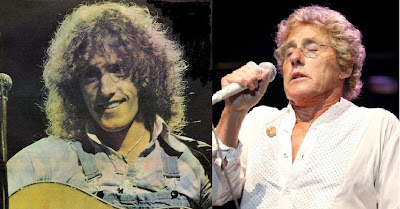The rich are different from you and me.
They are more selfish.
This is proclaimed by

on 29 July 2010.
Read on...
LIFE at the bottom is nasty, brutish and short. For this reason, heartless folk might assume that people in the lower social classes will be more self-interested and less inclined to consider the welfare of others than upper-class individuals, who can afford a certain noblesse oblige. A recent study, however, challenges this idea. Experiments by Paul Piff and his colleagues at the University of California, Berkeley, reported this week in the Journal of Personality and Social Psychology, suggest precisely the opposite. It is the poor, not the rich, who are inclined to charity.
In their first experiment, Dr Piff and his team recruited 115 people. To start with, these volunteers were asked to engage in a series of bogus activities, in order to create a misleading impression of the purpose of the research. Eventually, each was told he had been paired with an anonymous partner seated in a different room. Participants were given ten credits and advised that their task was to decide how many of these credits they wanted to keep for themselves and how many (if any) they wished to transfer to their partner. They were also told that the credits they had at the end of the game would be worth real money and that their partners would have no ability to interfere with the outcome.
A week before the game was run, participants were asked their ethnic backgrounds, sex, age, frequency of attendance at religious services and socioeconomic status. During this part of the study, they were presented with a drawing of a ladder with ten rungs on it. Each rung represented people of different levels of education, income and occupational status. They were asked to place an “X” on the rung they felt corresponded to where they stood relative to others in their own community.
The average number of credits people gave away was 4.1. However, an analysis of the results showed that generosity increased as participants’ assessment of their own social status fell. Those who rated themselves at the bottom of the ladder gave away 44% more of their credits than those who put their crosses at the top, even when the effects of age, sex, ethnicity and religiousness had been accounted for.
The prince and the pauper
In follow-up experiments, the researchers asked participants to imagine and write about a hypothetical interaction with someone who was extremely wealthy or extremely poor. This sort of storytelling is used routinely by psychologists when they wish to induce a temporary change in someone’s point of view.
In this case the change intended was to that of a higher or lower social class than the individual perceived he normally belonged to. The researchers then asked participants to indicate what percentage of a person’s income should be spent on charitable donations. They found that both real lower-class participants and those temporarily induced to rank themselves as lower class felt that a greater share of a person’s salary should be used to support charity.
Upper-class participants said 2.1% of incomes should be donated. Lower-class individuals felt that 5.6% was the appropriate slice. Upper-class participants who were induced to believe they were lower class suggested 3.1%. And lower-class individuals who had been “psychologically promoted” thought 3.3% was about right.
A final experiment attempted to test how helpful people of different classes are when actually exposed to a person in need. This time participants were “primed” with video clips, rather than by storytelling, into more or less compassionate states. The researchers then measured their reaction to another participant (actually a research associate) who turned up late and thus needed help with the experimental procedure.
In this case priming made no difference to the lower classes. They always showed compassion to the latecomer. The upper classes, though, could be influenced. Those shown a compassion-inducing video behaved in a more sympathetic way than those shown emotionally neutral footage. That suggests the rich are capable of compassion, if somebody reminds them, but do not show it spontaneously.
One interpretation of all this might be that selfish people find it easier to become rich. Some of the experiments Dr Piff conducted, however, sorted people by the income of the family in which the participant grew up. This revealed that whether high status was inherited or earned made no difference—so the idea that it is the self-made who are especially selfish does not work. Dr Piff himself suggests that the increased compassion which seems to exist among the poor increases generosity and helpfulness, and promotes a level of trust and co-operation that can prove essential for survival during hard times.




























